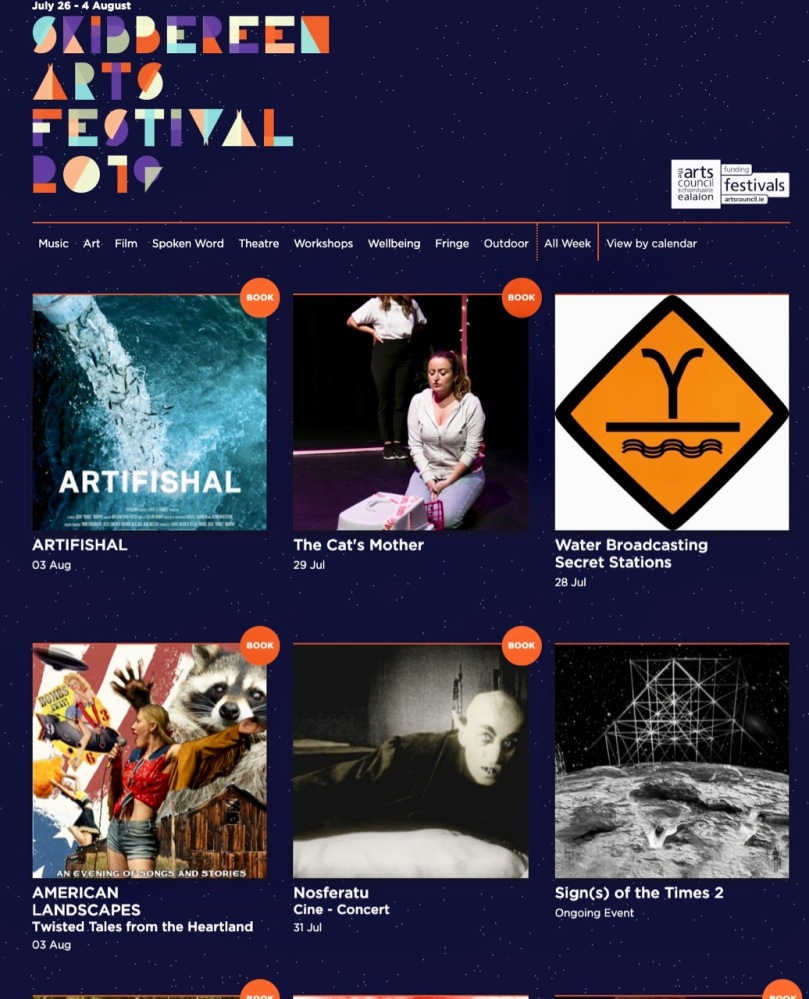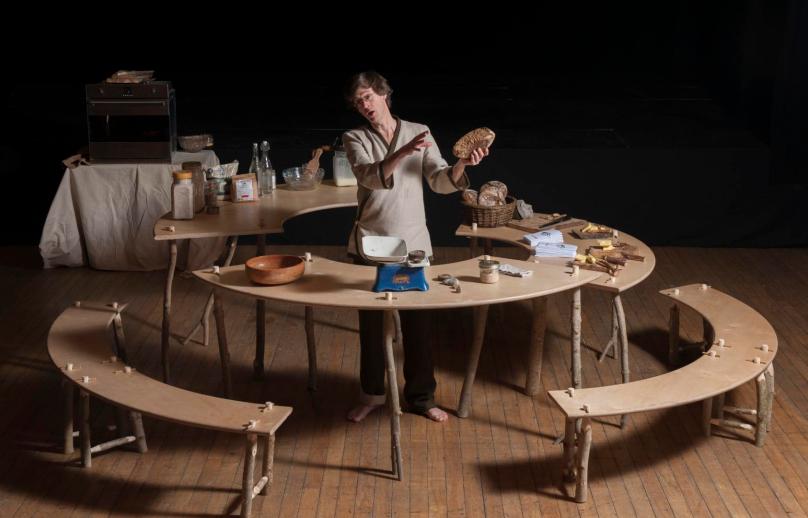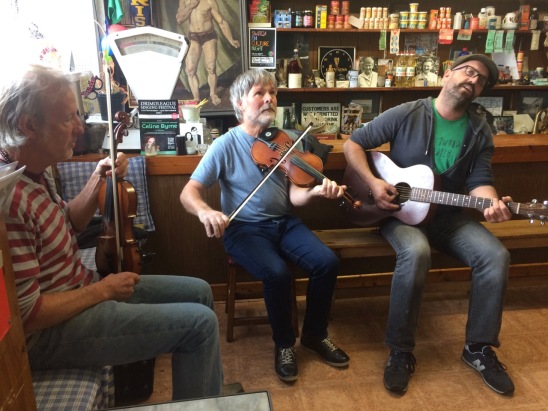
Young Ambassadors for Gloun Cross Dairy
We have this incredible food festival down here – A Taste of West Cork. I wrote about it in 2014 in this post and in this one. This year it was bigger and better than ever, with an astounding variety of events to choose from. We signed up for something every day and we are now in recovery.

We started off with a Sunday brunch in Glansallagh Gardens, cooked by Chef Bob, in the tractor loft of our old friend Richard, who supplies fresh and delicious vegetables to many local restaurants. Five courses, long harvest tables, strangers from all over chatting amiably, swapping stories and laughter, and then weaving home past the guard geese to snooze away the rest of Sunday.

We love Durrus Cheese and jumped at the chance to attend a demonstration of how it’s made and a tasting. Everything is local, everything is done by hand, the taste comes from years of making and a passion for quality. It felt like a privilege to glimpse behind the scenes.
Sarah, second-generation cheese maker, explains the different processes that produce the Durrus cheeses
The Chestnut Tree was a beloved Ballydehob pub, but it’s been closed for years. Recently, however, it was revived as an Airbnb and during the Festival was re-purposed once again as a restaurant. It worked wonderfully well as a convivial space.

French chef, Antony Cointre, was a popular choice at the Chestnut Tree
We signed up for a Ramen Bowl menu and were not disappointed. Chef Brian from Belfast makes everything – everything – from scratch and showed us how he makes the noodles. To taste his broth is to truly understand the concept of umami.
Our dining partners were Jack and Julia Zagar. Julia is the genius behind the dynamic e-presence of Discover Schull – website, Facebook Page and Instagram account. Jack generously lends his own images to local initiatives
From the Casual, we graduated to the Gracious: dinner at Drishane House was sumptuous. Drishane is the ancestral home of Edith Somerville, now the residence of Tom and Jane Somerville. Jane is a wonderful cook and Tom a genial host, and our fellow guests were a lovely mix of local and from-away. We dined by candlelight surrounded by portraits of Somervilles, wine and conversation flowed, delicious courses kept appearing (all locally sourced as is the ethic of this Festival), and the port and cheese arrived just as we felt that truly an evening could hold no more enjoyment.
Drishane House in the spring, and a portrait of Edith Somerville in her role of Master of the Fox Hounds
By no means is this Festival only about dinners and chefs. We were attracted into Levis’s pub in the early afternoon by the sound of music and found a lively session in full swing – the end of a walking tour of Ballydehob that promised soup (made from vegetables from that morning’s tiny local market) and music as a restorative after the exertions of the walk. Soup was pressed upon us and we didn’t object.
Bob, Liam and Joe entertain the walkers, while Robert has fun with Johanna
Perhaps the most fun we had was also at Levis’s – it was called Sing for your Supper and the idea was to eat and sing, and whoever was judged to be the best singer would win their supper. It was an absolute hoot, with lots of good sports belting out old favourites (I personally led a version of Satisfaction that would curdle milk) and several excellent singers enthralling us all. The food was superb, prepared by an acknowledged top Irish chef, and local man, Rob Krawczyk


Thanks to Colm Rooney of the wonderful local web design agency Cruthu Creative for the photos of Sing for Your Supper. Ah sure, you can’t belt out the numbers and be snapping at the same time, now can you?
We bonded as a table – there were six of us, and we were thrilled to discover the identity of the youngest member. It was Eoin Warner, and if that name means nothing to you, it will one day. Eoin narrated the Irish version of Wild Ireland, Eire Fhiáin, shown to rapturous acclaim on the Irish TV channel. The photography was extraordinary and opened many of our eyes to the wildlife we have here. Forget David Attenborough and the Amazon Jungles – to see a humpback whale bubble-netting up close is to realise how rich the oceans around Ireland are. Here’s an extract from Eire Fhiáin, with Eoin’s lovely, natural, narration and his deep sense of wonder. And – he has a great voice and won the competition!

Yesterday we went on a Cultural Taste Tour of Bere Island. It was our first time and it’s no exaggeration to say that we fell in love with it. I won’t say much about it because Robert’s post will fill you in, but I CAN say that we’re already planning our next trip back there.
One of our favourite stalls in the regular Saturday market had also set up in the Street Market – Olives West Cork is our source for excellent olive oil and the best parmesan cheese, as well as an amazing variety of nibbles
The week finished, as it always does, with the Skibbereen Street Market, and I will leave you with a slideshow of this colourful extravaganza.
This slideshow requires JavaScript.
Start planning now for next year! Everything books up quite quickly when the program is announced and if you leave it too late there may be no place to stay and no tables left unclaimed. It will be the among the best few days you’ve ever spent!
Email link is under 'more' button.
























































































